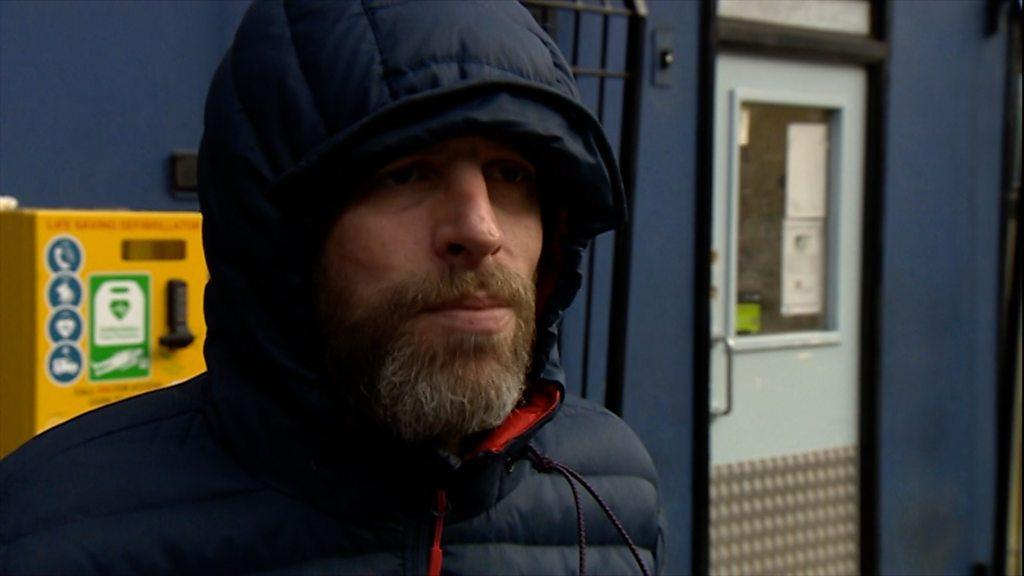Homelessness: Rough sleeping figures 'unacceptable' says Boris Johnson
- Published
"The worst part is not being seen", rough sleepers told Victoria Derbyshire
The number of people estimated to be sleeping rough in England is "way too high" and "totally unacceptable", Prime Minister Boris Johnson has said.
Government figures showed 4,266 people on the streets on one night in autumn 2019, a fall of 9% on the year before.
Separate figures obtained from councils by the BBC suggest 25,000 individuals slept rough in England at some point in the year.
Mr Johnson has pledged a further £236m to tackle homelessness.
The prime minister has announced additional funding to get rough sleepers off the streets - on top of £437m planned to deal with homelessness in 2020-21.
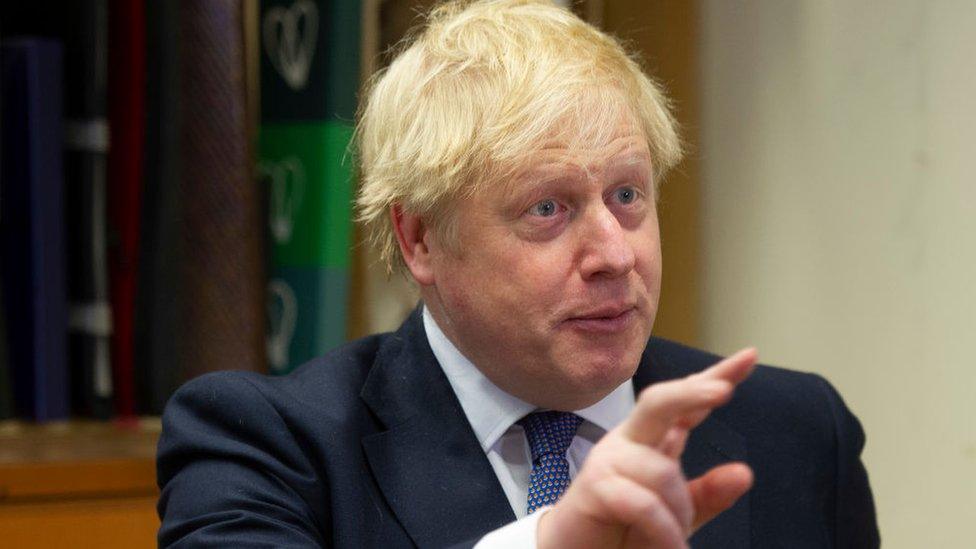
Prime Minister Boris Johnson, on a visit to a homelessness charity in London, said the number of rough sleepers was "way too high"
The money will go towards providing "move-on" accommodation for up to 6,000 rough sleepers.
Rough sleeping in England has more than doubled over the past decade and Labour said Conservative ministers needed to "face up" to the effects of cuts to housing, social security and homelessness services since 2010.
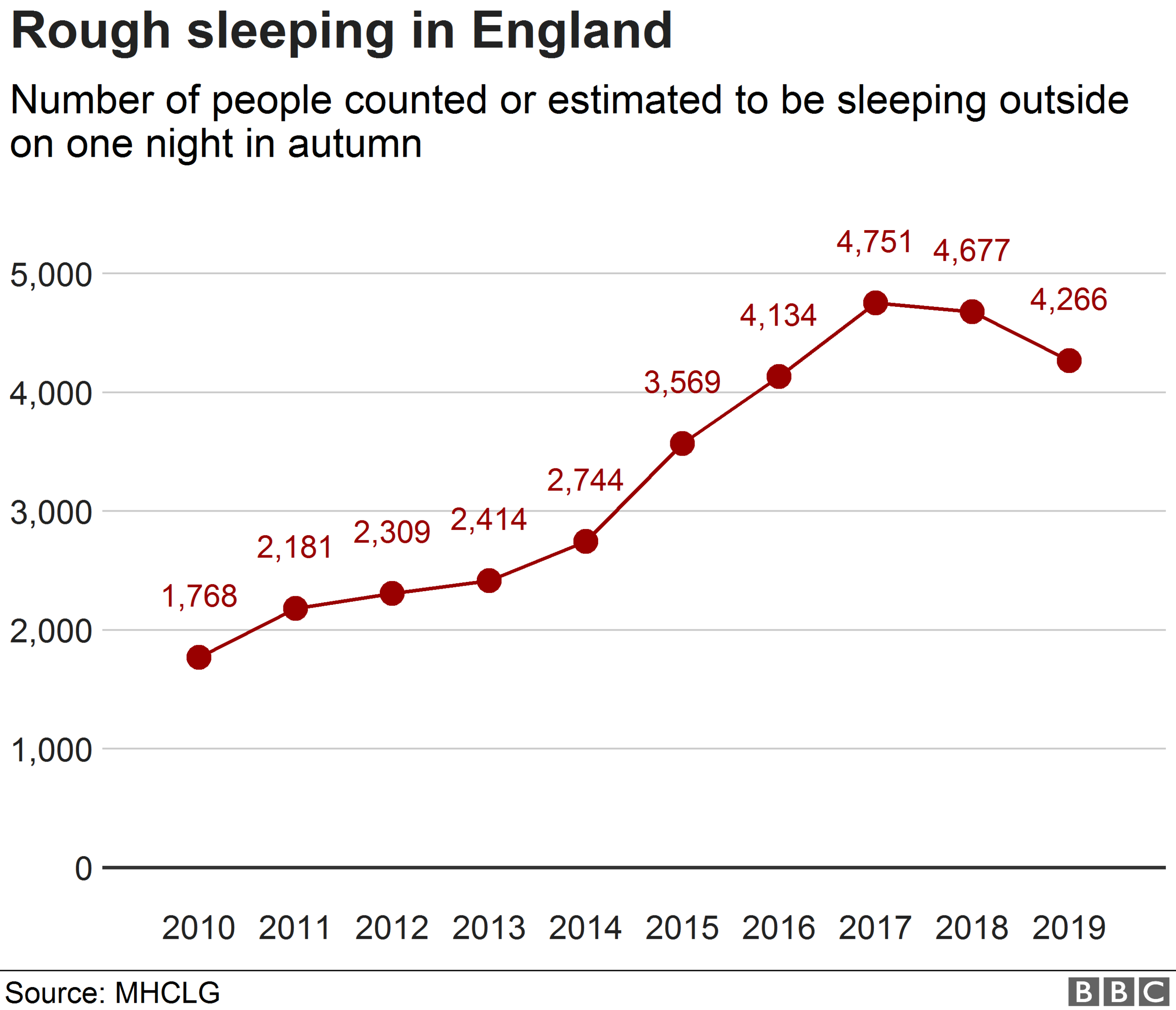
Speaking at a visit to London homelessness charity The Connection at St Martin's, the prime minister said: "The rough sleeping crisis is totally unacceptable.
"The number of people sleeping rough in our country is way too high. It is true that they have been coming down in the last year or so, but we want to drive that forward now.
"We want to make a big, big dent in those numbers."
The single-night snapshot also showed the first fall in London for six years, with 1,136 people recorded on the night of the count.
The snapshot suggests rough sleeping has increased by 141% since 2010, rising every year until 2017.
However, the homelessness charities Crisis and Glass Door said the figures did not show the real scale of rough sleeping throughout the year.
You may also be interested in:
Lucy Abraham, from London charity Glass Door, said: "These statistics grossly underestimate the true scale of homelessness.
"We know that many of the borough-co-ordinated street counts took place after Glass Door and many other charities had opened their shelter doors to rough sleepers for the winter.
"These figures matter because they are used to allocate resources to tackle homelessness in London. If the government is committed to measuring the number of people who need support around their homelessness, they need to recognise those sleeping in emergency winter night shelters."

How are rough sleepers counted?
The government's figures come from councils across England, which either count rough sleepers on one night in autumn or give an estimate based on what they are told by "local agencies", such as charities.
The single night can be between 1 October and 30 November.
According to a methodology note, external published by the government, they count in the autumn because there are likely to be more people sleeping rough in summer "due to warmer temperatures" and fewer in winter because temporary night shelters are helping people in cold weather.
The figures collected are then independently verified by Homeless Link, an umbrella organisation for homelessness organisations.
The figures do not include those with a history of sleeping rough or everyone seen throughout the October to November period.
Nor do they include those who are sleeping in emergency shelters or "sofa-surfing".
The BBC asked councils how many individuals they recorded throughout the year, rather than just for the snapshot, and those that replied revealed about 25,000 individuals seen across England during the most recent year on record.
It was not possible to get figures for individuals for previous years as many councils did not hold them, so the snapshot is the only measure of change over time.

Shadow housing secretary John Healey has written to the UK Statistics Authority saying the snapshot is "seriously misleading as it dramatically undercounts the number of people sleeping rough".
He said: "Any apparent fall in street sleeping is welcome, but everyone knows these misleading statistics are an unreliable undercount of the true scale of the problem.
"Even on these partial figures, the government is still set to break its pledge to end rough sleeping by the end of the Parliament, which it isn't set to achieve until 2037 at the current rate of progress."
He said ministers would not fix the crisis of rough sleeping until they "face up to the impact of deep cuts to housing, social security and homelessness services since 2010."
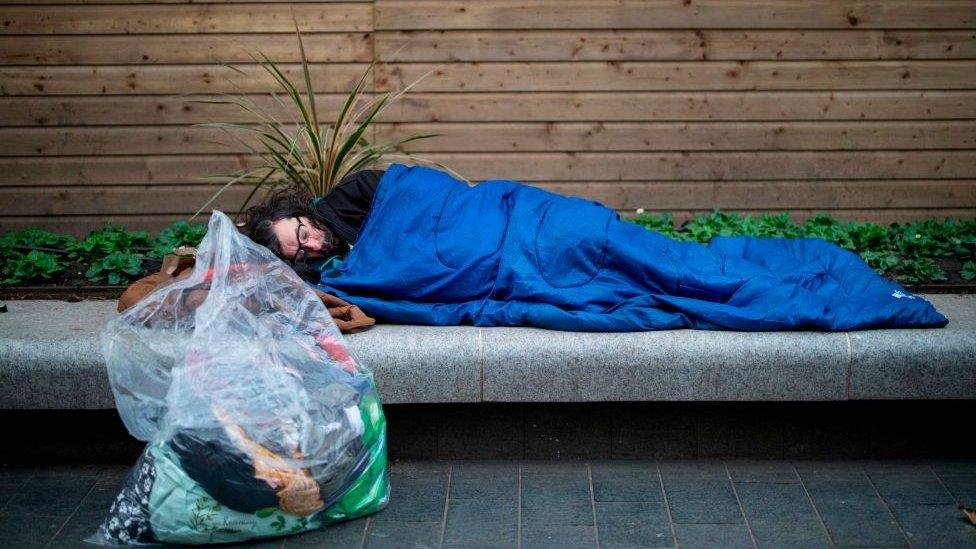
The number of rough sleepers in London fell for first time in six years
Housing Secretary Robert Jenrick told BBC Breakfast the government wanted to see rough sleeping "all but eliminated" by the end of 2024.
He defended the snapshot as a "methodology that is broadly the same as other developed countries around the world like Canada and Japan do and is consistent with how we've been measuring rough sleeping over the past 10 years".
In a statement Mr Jenrick added: "Today's figures show that we are making promising progress, building on last year's achievement which saw the first fall in the number of people sleeping rough for the first time in eight years.
"It is a moral scandal that in 2020 so many people continue to sleep rough on the streets, and that is why I am determined to end the blight of rough sleeping by the end of this Parliament."
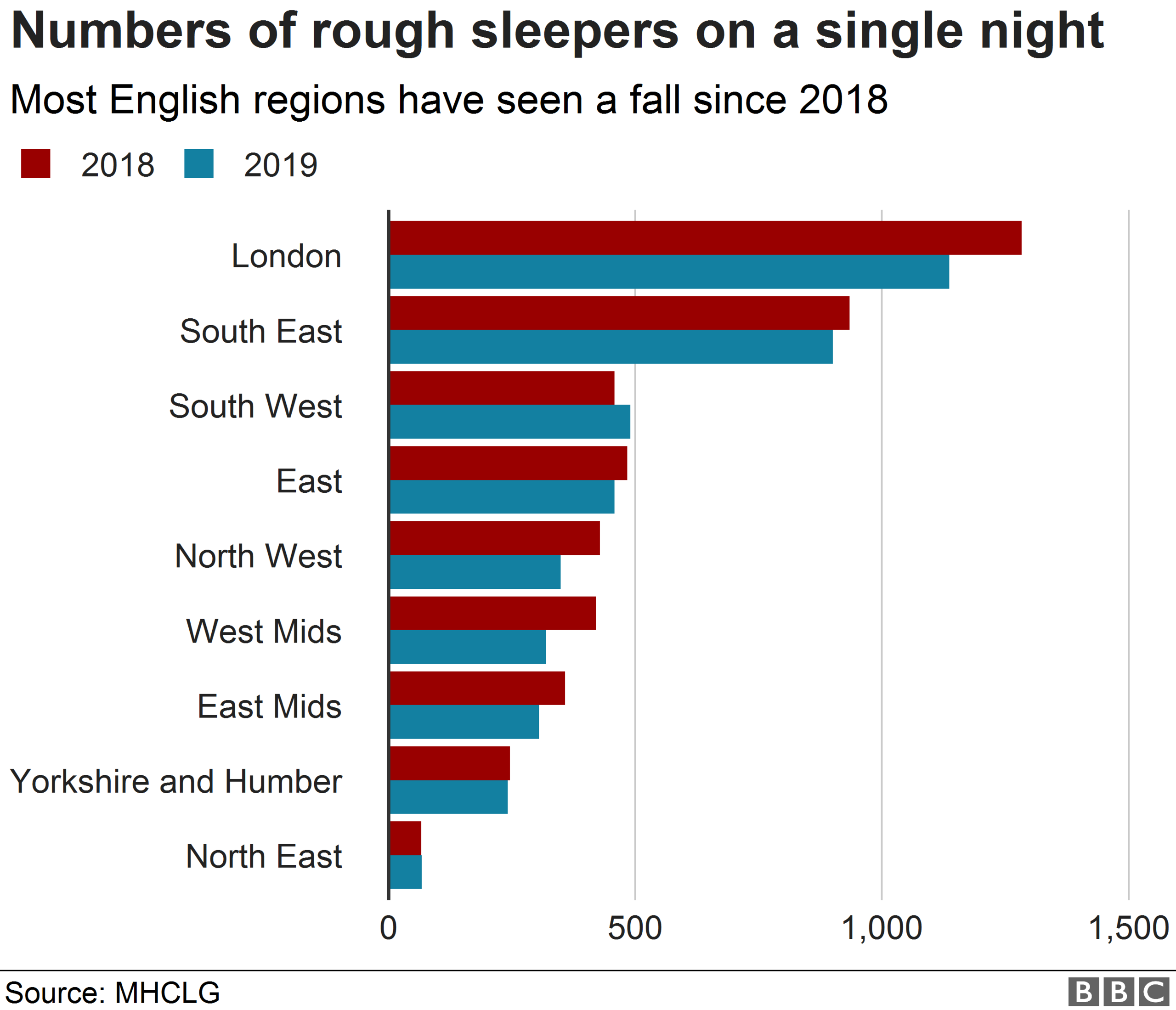
The West Midlands saw the biggest fall in one year, with 319 people counted on a single night. This was down 101 on 2018, a fall of 24%.
The South West region saw a rise of 7%, from 458 to 490. Of these, 98 were in Bristol.
Westminster in central London recorded the largest overall number of any authority with 333, up from 306 the year before.
Manchester reported a fall from 123 to 91 while Brighton and Hove reported a rise, from 64 to 88.
Birmingham's figure fell from 91 to 52.
The figures showed 83% of rough sleepers counted in England on one night were male.
Six of the 4,266 people recorded were under 18 and a further 201 were under 25.
- Published26 February 2020
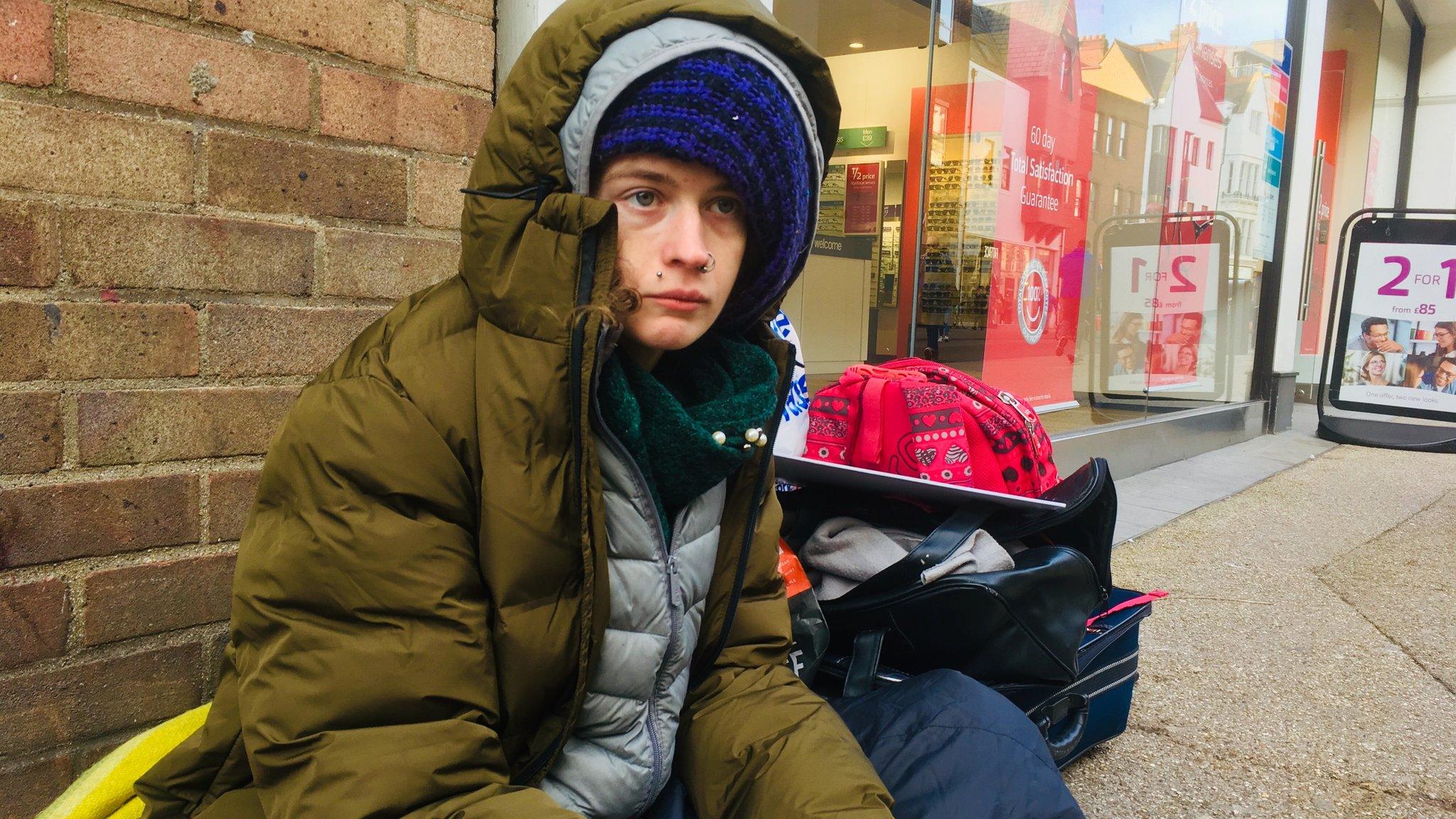
- Published26 February 2020
